Fine Two-Day Marine Chronometer Signed Charles Frodsham
Sold
Follow Us
Fine Two-Day Marine Chronometer Signed Charles Frodsham
A Sturdy English Two-Day Marine Chronometer Made by the Renowned Maker Charles Frodsham, c. 1860
A classic expertly produced 19th century English chronometer in a three-tier rosewood case, made c. 1860. The typically brass bound case consists of a lower and a glazed upper part, as well as a top lid. The lower part has two drop handles to the sides, while the front has a lock and key with an inlaid brass escutcheon. In the front of the upper part is a brass button to lock the top lid, as well as a circular bone plaque inscribed as follows: CHAs FRODSHAM 84 Strand LONDON No 2819.
The movement is situated in a gimballed brass bowl, which can be secured for transport purposes by a turnable handle in the bottom right corner of the case. The 4″ silvered dial is protected by a flat bevelled glass set in a brass bezel, screwed to the bowl. The top rim of the silvered inside of the bezel bears the following text ‘EXPOSITION UNIVERSELLE DE 1855 GRANDE MEDAILLE D’HONNEUR’. In addition, there is an original protective case, in which the chronometer can be placed to protect it from external hazards.
The maker has signed and numbered the chronometer on the silvered dial in the following manner:
CARLES FRODSHAM
84 STRAND LONDON
No 2819
The time is indicated by a fine pair of gilt brass hands on the silvered dial with a Roman chaptering, five-minute and minute divisions.
The seconds are indicated by a blued-steel hand on a separate chapter ring below the middle with Arabic ten-second, five-second and second divisions. Below the XII is up-and-down dial 0-56 (hours), indicating the state of winding.
The two-day movement is constructed between two circular plates and is driven by a spring in a spring barrel via a chain fusee. It has an Earnshaw spring detent escapement with a compensated balance and helical spring. The chronometer is wound by a special key with a ratchet to prevent winding the clock in the wrong direction. The original key can be stored in a hole in the top right corner of the case. The winding hole is covered by a large circular sprung shutter.
The maker
Charles Frodsham was born into a dynasty of clock, watch and chronometer makers on the 15 April 1810. His father William James Frodsham (1779-1850) and Hannah Lambert had ten children, five of whom were apprenticed to their father and later became horologists in their own right.
Charles was educated at Christ’s Hospital, the Bluecoat School in Newgate, London, and as a condition of the Foundation, was apprenticed at the age of fourteen to his father William. He showed early promise submitting two chronometers (numbers 1 & 2) to the 1830 Premium Trials at Greenwich, No.2 gaining the second Premium prize of £170. A further nine chronometers were then entered for trial in subsequent years, until the termination of the Premium Trials, in 1836.
By the mid-1850s Charles had established himself as one of the period’s most eminent horologists. In 1854 upon the death of Benjamin Lewis Vulliamy, he purchased the goodwill of the business and succeeded Vulliamy as Superintendent and Keeper of Her Majesty’s Clocks at Buckingham Palace. This prestigious title aided the sale of clocks, watches and chronometers worldwide, Charles having overseas representation and agents in America, France and Spain.
He was a liberal supporter and judicial advisor to the societies connected with horology, being one of the founding members, and later Vice President, of the British Horological Institute in 1858, and a Liveryman of the Worshipful Company of Clockmakers, in which he served as Master in 1855 and 1862.
In the same year the Great International Exhibition was held at South Kensington, where Charles not only exhibited but was also one of the jurors. Amongst his exhibits were a month duration marine chronometer.
Charles died on the 11 January 1871 at his home at 26 Upper Bedford Place, and was buried at Highgate cemetery, London, in the family vault next to that of his father. His obituary succinctly stated that ‘during a long and honourable career, he distinguished himself by his devotion to the science of horology, which he greatly advanced, and his clever works upon the subject are regarded as authoritative by members of the trade’. The firm continued under the leadership of Charles’s son Harrison Mill Frodsham (1849–1922) and exists to the present day.
References: Tony Mercer, Chronometer Makers of the World, p. 195
Jonathan Betts, Marine Chronometers at Greenwich, Oxford, 2017
Frodsham site
Condition
Good. Wear consistent with age and use. Fantastic condition throughout, in perfect order.
Dimensions
Height: 7.29 in (18.5 cm)
Width: 6.97 in (17.7 cm)
Depth: 7.09 in (18 cm)
PREVIOUSLY SOLD
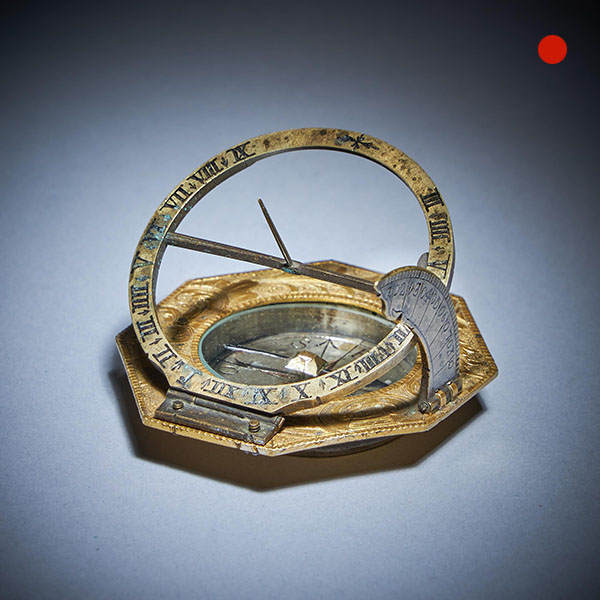
18th Century Gilt brass and Silver Pocket or Miniature sundial compass with Case
18th Century Gilt brass and Silver Pocket or Miniature sundial compass with Case SoldFollow Us18th Century Gilt brass and Silver Pocket or Miniature sundial compass with Case A FINE 18TH CENTURY GILT BRASS AND SILVER POCKET SUNDIAL WITH...
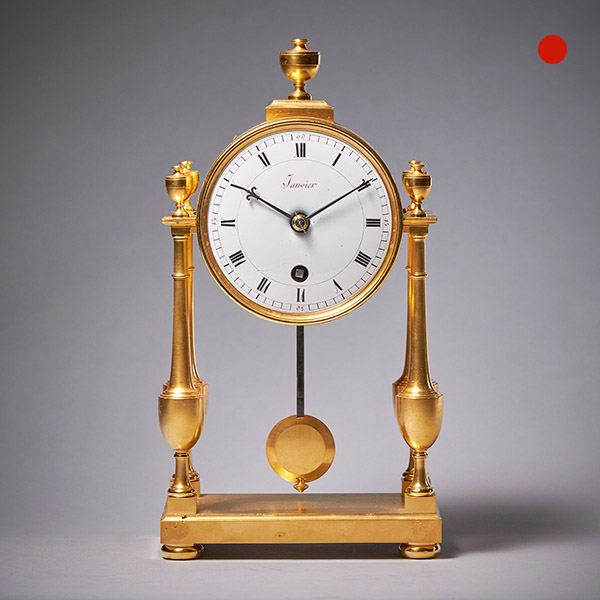
Small Proportioned Elegant Portico Mantel Clock by Janvier, c. 1815
Small Proportioned Elegant Portico Mantel Clock by Janvier, c. 1815 SoldFollow UsSmall Proportioned Elegant Portico Mantel Clock by Janvier, c. 1815 Antide Janvier (1751-1835) started his clockmaker's life in Besançon, a clockmaker's centre...
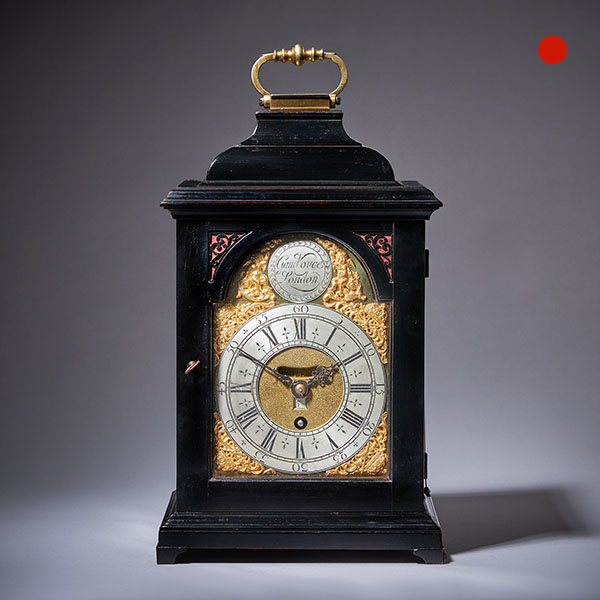
A Small 18th century George I period table clock by Gamaliel Voyce, c.1725
A Small 18th century George I period table clock by Gamaliel Voyce, c.1725 SoldFollow UsA Small 18th century George I period table clock by Gamaliel Voyce, c.1725 An extremely attractive early 18th century George I period table clock of small...
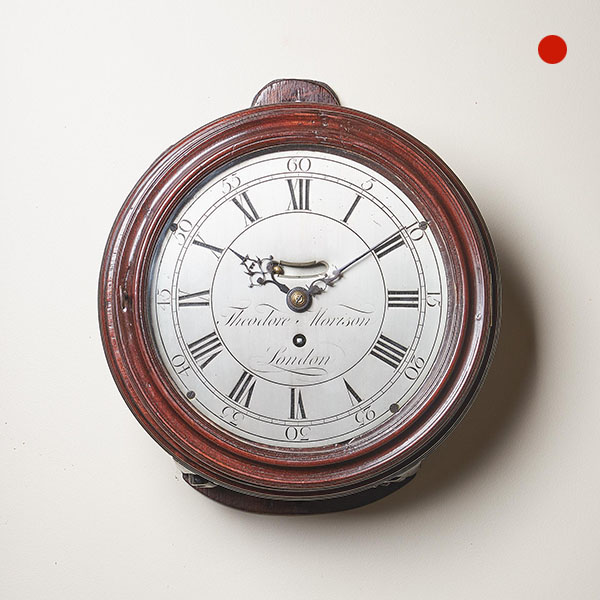
18th-Century George III Mahogany Eight-Day 8″ Silver Dial Clock by T.M London
18th-Century George III Mahogany Eight-Day 8" Silver Dial Clock by T.M London Sold Follow Us18th-Century George III Mahogany Eight-Day 8" Silver Dial Clock by T.M London A Rare 18th-Century Georgian English 8" Dial Clock / Wall Clock, by...
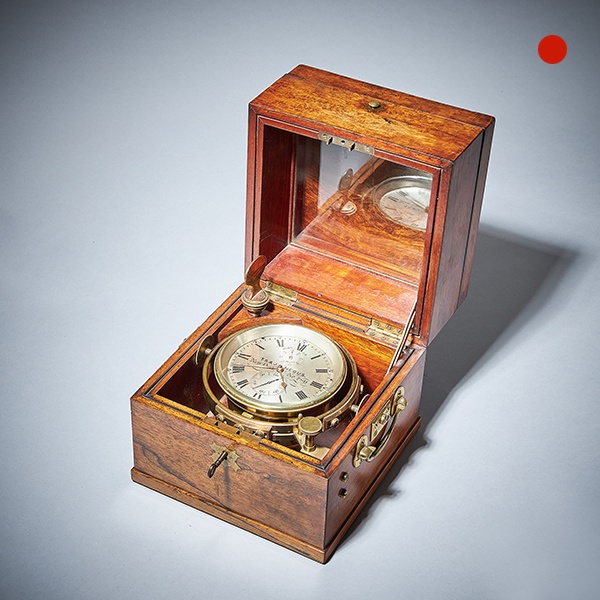
Fine American Two Day Marine Chronometer, Signed T. S & J. D Negus New York
Fine American Two Day Marine Chronometer, Signed T. S & J. D Negus New York SoldFollow UsFine American Two Day Marine Chronometer, Signed T. S & J. D Negus New York A Classic beautifully produced mid-19th century American chronometer...
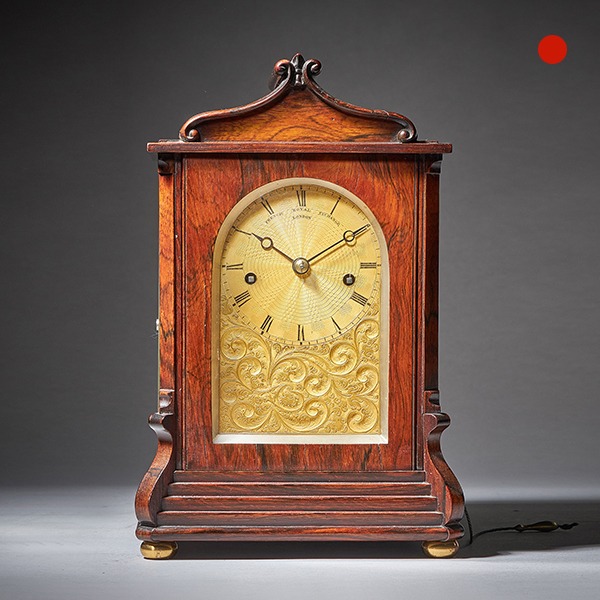
Striking George IV Eight-Day Rosewood Pagoda Library Clock by French, London
Striking George IV Eight-Day Rosewood Pagoda Library Clock by French, London Sold Follow UsStriking George IV Eight-Day Rosewood Pagoda Library Clock by French, London This lovely small library clock has a spring-driven eight-day twin...

18th Century Gilt brass and Silver Pocket or Miniature sundial compass with Case
18th Century Gilt brass and Silver Pocket or Miniature sundial compass with Case SoldFollow Us18th Century Gilt brass and Silver Pocket or Miniature sundial compass with Case A FINE 18TH CENTURY GILT BRASS AND SILVER POCKET SUNDIAL WITH...

Small Proportioned Elegant Portico Mantel Clock by Janvier, c. 1815
Small Proportioned Elegant Portico Mantel Clock by Janvier, c. 1815 SoldFollow UsSmall Proportioned Elegant Portico Mantel Clock by Janvier, c. 1815 Antide Janvier (1751-1835) started his clockmaker's life in Besançon, a clockmaker's centre...

A Small 18th century George I period table clock by Gamaliel Voyce, c.1725
A Small 18th century George I period table clock by Gamaliel Voyce, c.1725 SoldFollow UsA Small 18th century George I period table clock by Gamaliel Voyce, c.1725 An extremely attractive early 18th century George I period table clock of small...

18th-Century George III Mahogany Eight-Day 8″ Silver Dial Clock by T.M London
18th-Century George III Mahogany Eight-Day 8" Silver Dial Clock by T.M London Sold Follow Us18th-Century George III Mahogany Eight-Day 8" Silver Dial Clock by T.M London A Rare 18th-Century Georgian English 8" Dial Clock / Wall Clock, by...

Fine American Two Day Marine Chronometer, Signed T. S & J. D Negus New York
Fine American Two Day Marine Chronometer, Signed T. S & J. D Negus New York SoldFollow UsFine American Two Day Marine Chronometer, Signed T. S & J. D Negus New York A Classic beautifully produced mid-19th century American chronometer...

Striking George IV Eight-Day Rosewood Pagoda Library Clock by French, London
Striking George IV Eight-Day Rosewood Pagoda Library Clock by French, London Sold Follow UsStriking George IV Eight-Day Rosewood Pagoda Library Clock by French, London This lovely small library clock has a spring-driven eight-day twin...
YOU MAY ALSO LIKE
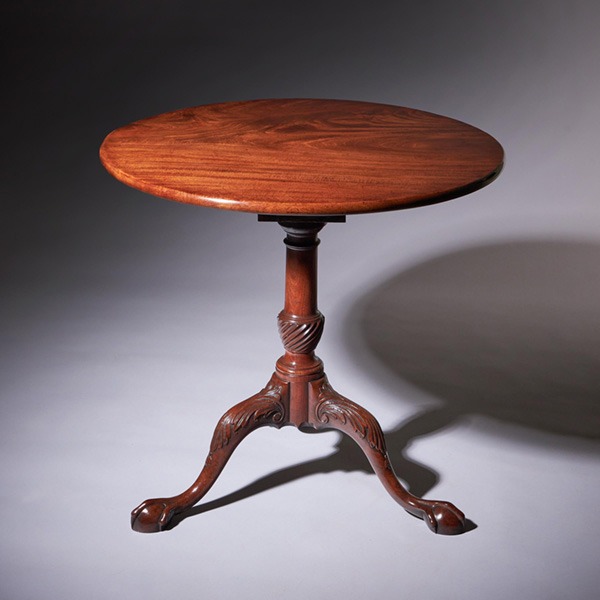
A Fine 18th Century George II Mahogany Tripod Table, Circa 1760
A Fine 18th Century George II Mahogany Tripod Table, Circa 1760 £5,800Follow UsA Fine 18th Century...
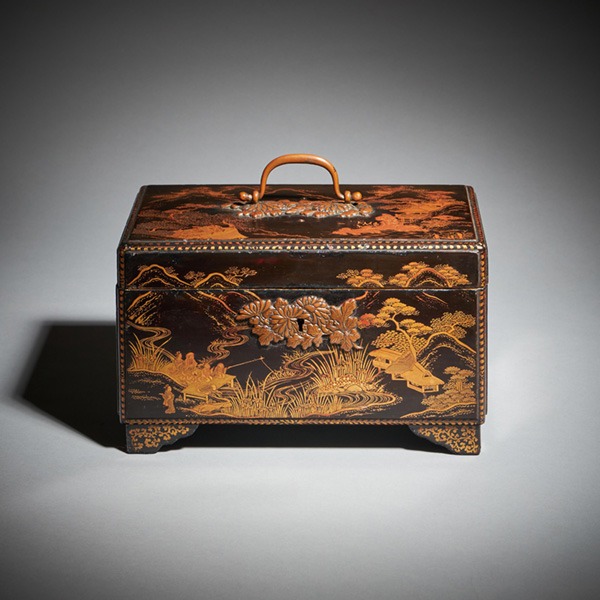
Rare 18th Century George III Lacquer Tea Caddy with Original Lacquer Canisters
Rare 18th Century George III Lacquer Tea Caddy with Original Lacquer Canisters £4,250Follow UsRare...
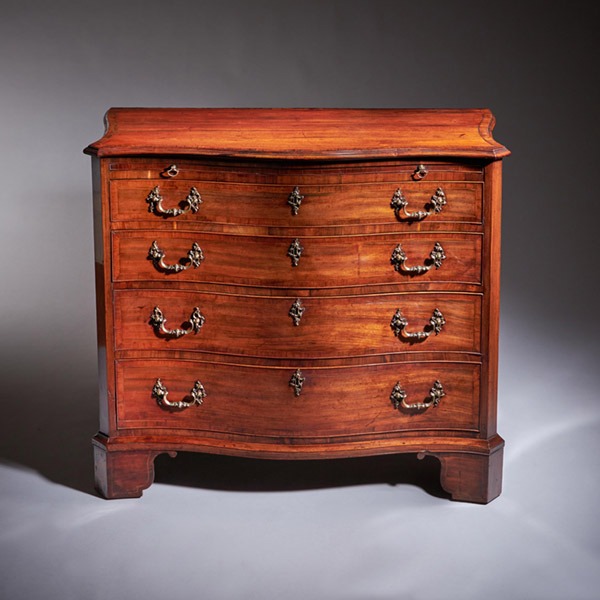
Important 18th Century Goncalo Alves Serpentine Chest Signed J N Teague 1779
Important 18th Century Goncalo Alves Serpentine Chest Signed J N Teague 1779 £15,900Follow...
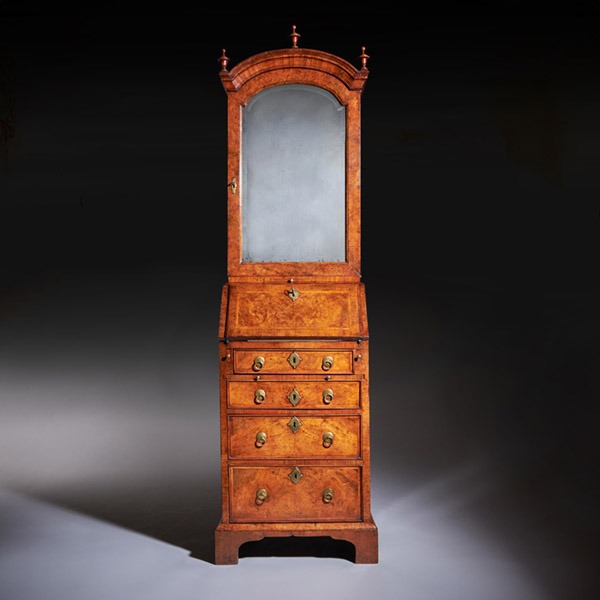
18th Century Queen Anne Burr Walnut Double Dome Bureau Bookcase
18th Century Queen Anne Burr Walnut Double Dome Bureau Bookcase £28,000Follow Us18th Century Queen...
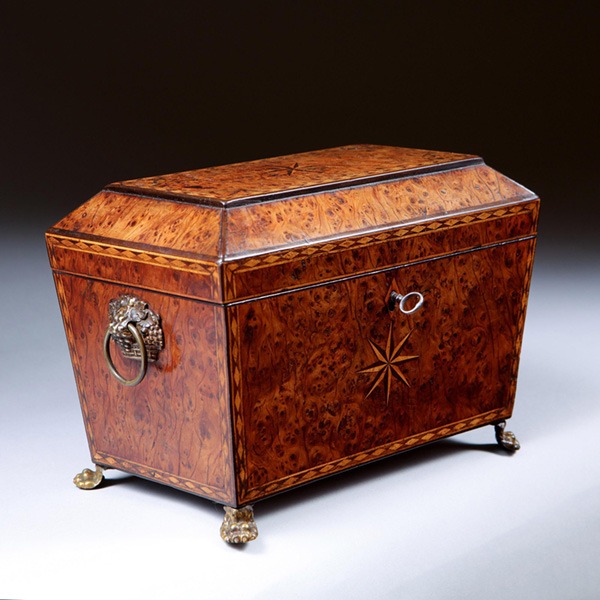
18th Century George III Burr Yew Tea Caddy with Star Inlay and Brass Accents
18th Century George III Burr Yew Tea Caddy with Star Inlay and Brass Accents £2,200Follow Us18th...
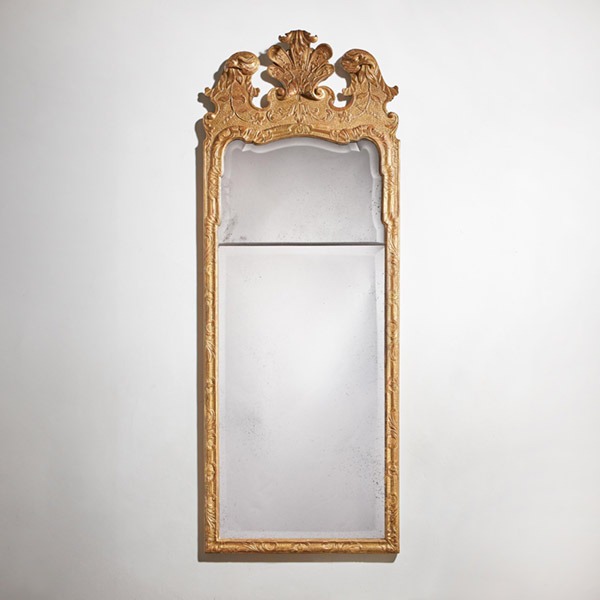
18th Century George I Gilt-Gesso Pier Glass mirror, Manner of John Belchier
18th Century George I Gilt-Gesso Pier Glass mirror, Manner of John Belchier £8,900Follow Us18th...

A Fine 18th Century George II Mahogany Tripod Table, Circa 1760
A Fine 18th Century George II Mahogany Tripod Table, Circa 1760 £5,800Follow UsA Fine 18th Century...

Rare 18th Century George III Lacquer Tea Caddy with Original Lacquer Canisters
Rare 18th Century George III Lacquer Tea Caddy with Original Lacquer Canisters £4,250Follow UsRare...

Important 18th Century Goncalo Alves Serpentine Chest Signed J N Teague 1779
Important 18th Century Goncalo Alves Serpentine Chest Signed J N Teague 1779 £15,900Follow...

18th Century Queen Anne Burr Walnut Double Dome Bureau Bookcase
18th Century Queen Anne Burr Walnut Double Dome Bureau Bookcase £28,000Follow Us18th Century Queen...

18th Century George III Burr Yew Tea Caddy with Star Inlay and Brass Accents
18th Century George III Burr Yew Tea Caddy with Star Inlay and Brass Accents £2,200Follow Us18th...

18th Century George I Gilt-Gesso Pier Glass mirror, Manner of John Belchier
18th Century George I Gilt-Gesso Pier Glass mirror, Manner of John Belchier £8,900Follow Us18th...













